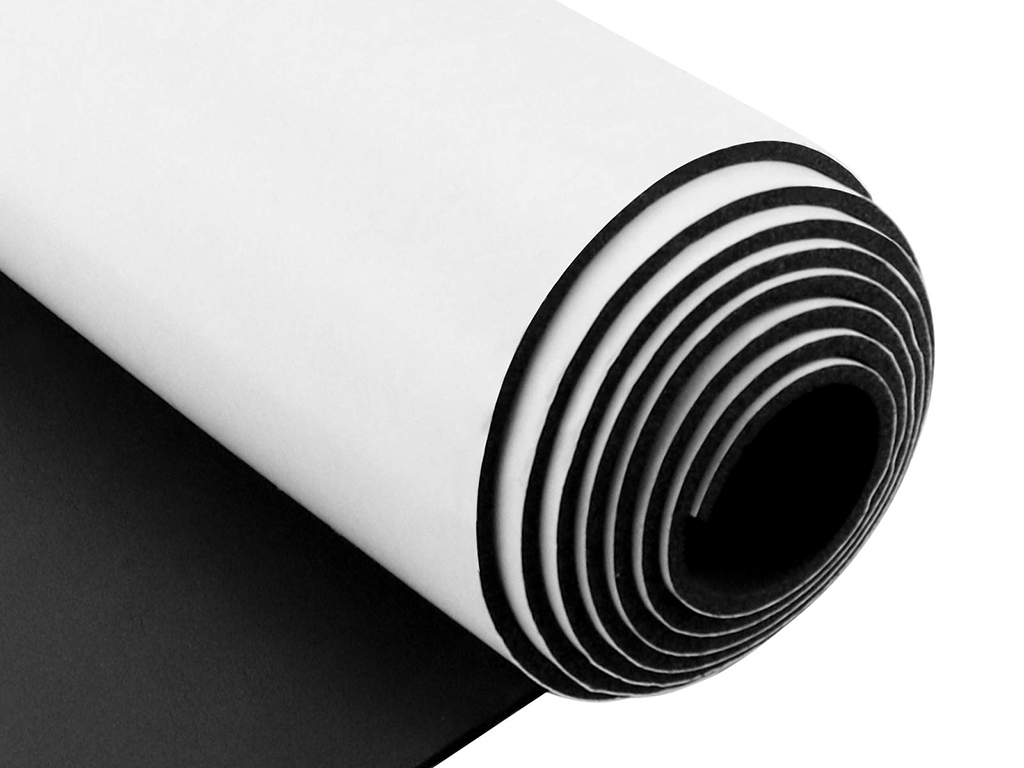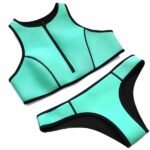Neoprene is a versatile material widely used in products ranging from wetsuits to laptop sleeves. But how exactly does this unique material function in the various applications we use it for? If you’ve ever wondered how neoprene provides insulation, durability, or water resistance, you’re in the right place. This post will break down the science behind neoprene, its properties, and the real-world advantages and disadvantages of using it.
Neoprene works by utilizing its high elasticity and insulating properties to provide a shock-resistant and waterproof barrier, making it ideal for many applications like wetsuits and bags.
Transition paragraph: To understand how neoprene functions in different environments, it’s important to start by knowing exactly what neoprene is and how it behaves in its various forms.
What is Neoprene?
Neoprene is a type of synthetic rubber made from polymerized chloroprene, a compound that has excellent elasticity, durability, and resistance to heat and chemicals. It was first developed in the 1930s and became popular for various industrial and consumer applications due to its unique properties. Neoprene is often used in products like wetsuits, laptop bags, knee pads, and more.
Neoprene is a synthetic rubber that offers superior elasticity, durability, and resistance to water, heat, and various chemicals, making it a go-to material in numerous industries.
Dive Deeper: Neoprene is created through a polymerization process, where chloroprene monomers are chemically bonded to form long chains. This process helps create a material with a combination of traits like flexibility, high tensile strength, and resistance to environmental wear. This is why neoprene is often used in demanding applications where both durability and flexibility are essential. Whether it’s protecting electronics from water damage or insulating the body during water sports, neoprene’s versatility shines. What is neoprene and how is it made?[^1]
What are the disadvantages of neoprene?
Although neoprene has many advantages, it’s not without its drawbacks. Understanding these disadvantages can help you make informed decisions when selecting materials for specific applications.
Despite its many advantages, neoprene can be expensive, not entirely biodegradable, and sensitive to prolonged exposure to sunlight, which can reduce its lifespan.
Dive Deeper: One of the primary downsides of neoprene is its environmental impact. Unlike natural rubber, neoprene is not biodegradable and can take a long time to decompose in landfills. This makes it less eco-friendly than other materials. Additionally, while neoprene is highly resistant to wear and tear, it can degrade when exposed to UV light for extended periods, which can cause it to lose elasticity and strength. Another disadvantage is that neoprene can be quite expensive compared to other materials, which may make it less suitable for low-cost applications. Finally, neoprene’s insulation properties are excellent, but it is not the most breathable material, which can lead to discomfort in some uses, like clothing. What are the environmental impacts of neoprene?[^2]
How does neoprene keep you warm?
Neoprene is best known for its ability to keep people warm, especially in water sports like diving or surfing. But how does it achieve this? The secret lies in its structure and how it interacts with water.
Neoprene keeps you warm by trapping a thin layer of water between the material and your skin. This water gets warmed by your body heat, creating a thermal barrier that helps retain body warmth.
Dive Deeper: Neoprene’s insulating capabilities are due to the tiny air pockets within the material. These air pockets trap water, creating a barrier between your body and the surrounding environment. When you wear a neoprene wetsuit, the suit fills with a small amount of water. Your body heats up this water, creating an insulating layer that helps maintain warmth. Unlike traditional fabrics that allow water to pass through and evaporate, neoprene’s structure minimizes water exchange, keeping the warmth close to your body. How does neoprene prevent water absorption?[^3]
In water sports, maintaining body temperature is critical for safety and comfort. Neoprene suits offer thermal insulation by preventing the loss of heat from the body in cold water. The thicker the neoprene material, the better the insulation it provides. Wetsuits made from thicker neoprene are designed for colder environments, ensuring that athletes remain comfortable and safe while diving, surfing, or swimming.
What is so special about neoprene?
Neoprene stands out because it combines flexibility with durability, making it ideal for many industries. From wetsuits to everyday accessories, neoprene’s unique blend of characteristics is what makes it so valuable in product design.
Neoprene is special because of its unique combination of elasticity, durability, and resistance to heat, chemicals, and water, allowing it to perform in harsh conditions.
Dive Deeper: Neoprene’s most notable characteristic is its ability to stretch and return to its original shape, making it a fantastic material for items like sportswear, gloves, and bags. This elasticity is key in its use for products like wetsuits, where the material must flex and mold to the body while providing protection against water and cold temperatures. Another important feature of neoprene is its resistance to chemicals, oils, and even ozone. This makes neoprene a great choice for industrial applications, as well as items like laptop sleeves that need to resist spills and environmental damage. How is neoprene used in industrial applications?[^4]
Neoprene is also highly waterproof, which is why it’s used in products that require water resistance, such as rain covers, knee pads, and footwear. What sets it apart from other synthetic rubbers is its ability to maintain its flexibility and integrity across a wide range of temperatures and environmental conditions.
Is neoprene 100% waterproof?
Neoprene is often considered waterproof, but the truth is a little more nuanced. It is highly water-resistant, but it is not completely waterproof under all conditions.
While neoprene is highly water-resistant, it’s not entirely waterproof. The material can still absorb some water, but it resists water penetration much better than many other materials.
Dive Deeper: Neoprene’s waterproof qualities come from its closed-cell structure, where the individual cells are tightly packed, preventing water from passing through easily. However, it is important to note that neoprene is not 100% waterproof in every scenario. Under high pressure or prolonged submersion, neoprene can absorb some water, especially if the material is damaged or stretched. In most applications, such as wetsuits and water-resistant bags, neoprene provides adequate protection against water. But in situations where complete waterproofing is necessary, additional coatings or sealing techniques may be required. Is neoprene 100% waterproof?[^5]
In conclusion, neoprene is one of the most effective materials for resisting water and providing insulation, but it does have limitations depending on the environment and usage.
Conclusion
Neoprene is an incredibly versatile material that combines durability, flexibility, and resistance to water and temperature fluctuations. It is a material that thrives in applications where performance in harsh conditions is necessary. From keeping you warm in wetsuits to providing shock resistance in bags, neoprene’s unique properties make it an essential material across multiple industries. However, it’s important to understand both the benefits and limitations of neoprene when deciding if it’s the right choice for your specific needs.
Whether you’re a brand owner, wholesaler, or designer, knowing the science behind neoprene can help you make better decisions in your product development and sourcing processes. If you want more details on neoprene-based products, feel free to contact us at Szoneier—we’re always ready to help you find the right solution.











